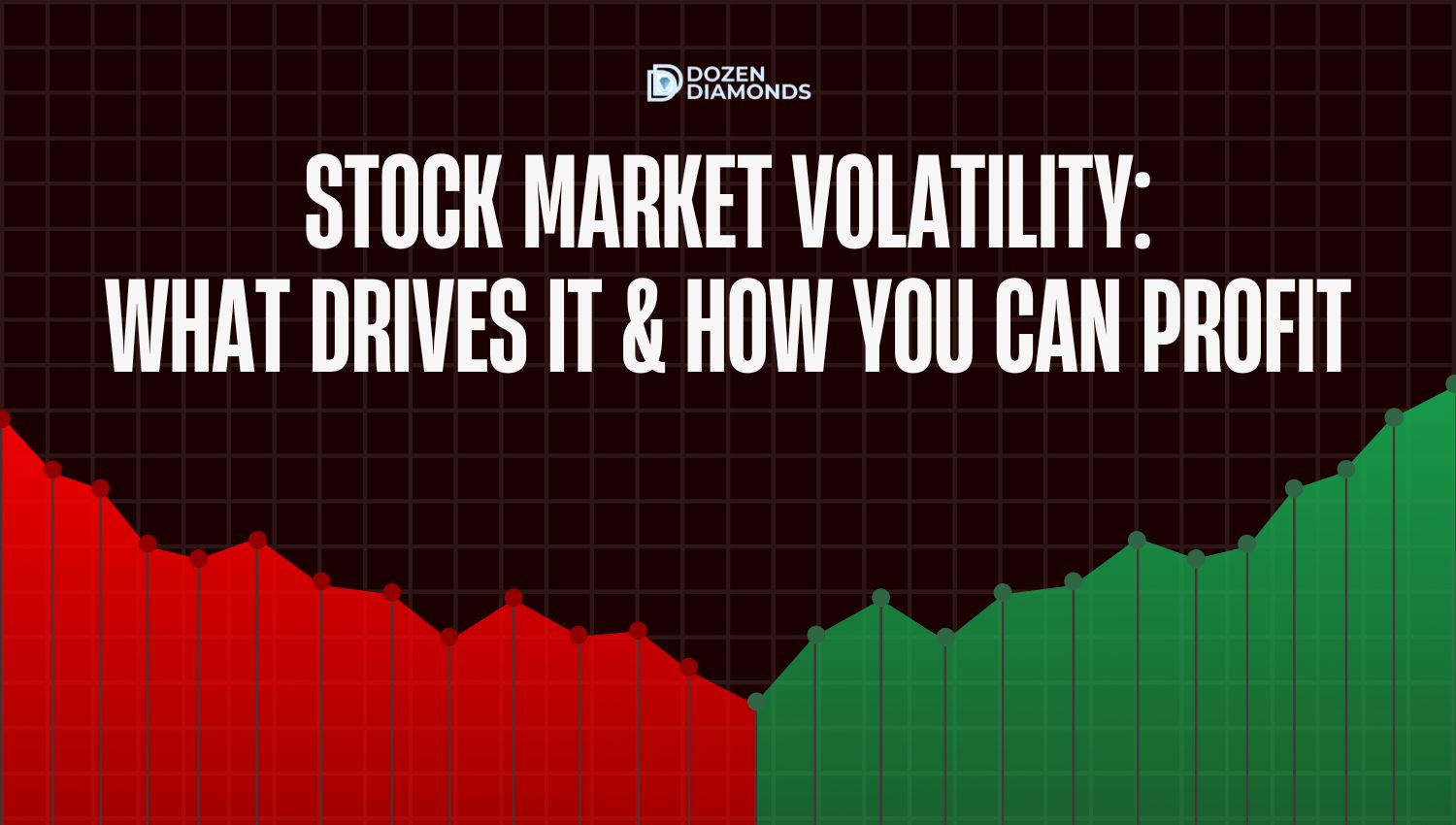Stock Market Volatility: What Drives It & How You Can Profit

Table of Contents
Introduction
By reading this article, you will gain a clear framework to understand, measure, and act in volatile markets with confidence (stock market volatility).
The methods and insights here are grounded in financial research and real market episodes showing how volatility patterns repeat.
You’ll gain:
- A grasp of key causes and indicators of stock market volatility
- Tools to quantify risk and spot regime shifts
- Practical strategies to protect and even profit during high volatility
What Is Stock Market Volatility?
Stock market volatility refers to how much and how quickly asset prices (or indexes) swing over a time period. Investopedia
In statistics, volatility is often expressed via standard deviation or variance of returns; in markets, “implied volatility” (derived from option prices) is also a key metric. Investopedia
Volatility doesn’t indicate direction (up or down) — it only describes magnitude of price movement.
Why It Matters: Risk, Opportunity & Market Psychology
- Risk and uncertainty: Higher volatility often signals greater downside risk.
- Opportunity: Traders can profit from big swings (buy the dip, volatility strategies).
- Sentiment & fear: High volatility often correlates with fear, panic, or overreaction by market participants.
For long-term investors, volatility is often viewed as “noise” to ride through; for active traders, volatility is fuel. FINRA
Key Measures & Tools
3.1 Historical Volatility
Measures volatility based on past price behavior (daily, weekly, monthly returns). Investopedia
3.2 Implied Volatility
Derived from option prices, reflecting market expectations of future volatility. eToro
3.3 VIX (Volatility Index)
Often called the “fear gauge,” VIX reflects implied volatility of S&P 500 options (30-day). A rising VIX typically signals rising market uncertainty. Investopedia
3.4 Beta
Beta measures how a particular stock moves relative to the market. A stock with a beta > 1 is more volatile than the market. Bankrate
Major Drivers & Triggers
- Economic data / surprise announcements (inflation, GDP, employment)
- Monetary policy / central bank decisions
- Geopolitical events / crises
- Earnings shocks / news events
- Algorithmic / high-frequency trading & feedback loops
- Volatility clustering — periods of high volatility tend to cluster (volatility tends to persist)
Academic work also studies more advanced estimators, e.g. cross-sectional intrinsic entropy, to track volatility more sensitively. arXiv
What Many Guides Miss: Regime Shifts & Volatility Clustering
Many articles describe volatility in isolation; fewer discuss how markets move between regimes (calm, trending, chaotic).
Also, volatility is non-stationary — clustering behavior (high then high, low then low) is a key pattern.
Moreover, many guides skip advanced / new estimators (e.g. intrinsic entropy) or volume-based volatility metrics. arXiv
Including regime detection, volatility decay, and entropy measures fills a gap.
Risks & Pitfalls in Volatile Markets
- Whipsaws / false signals — price reversals that trap traders
- Illiquidity & wider spreads during extreme swings
- Overleveraging — volatility amplifies losses
- Emotional decision-making — fear / greed distort judgment
- Model breakdown under regime changes
Also, excessively low volatility periods can precede big jumps (markets become complacent). arXiv
Strategies to Navigate / Harness Volatility
- Volatility-based position sizing (e.g. scale size based on volatility)
- Use options / hedges (buy protective puts, straddles)
- Mean reversion & trend strategies — adjust to regime
- Volatility regime filters — trade only when volatility is in your sweet spot
- Diversification / use low volatility assets to buffer
Example / Case: 2020 Crash & 2022 Inflation Shock
- In early 2020, when COVID news struck, the VIX spiked to extreme levels, stocks plunged, then recovered rapidly.
- In 2022, inflation surprises and rate increases induced volatile periods, large intraday swings, and regime rethinking.
Checklist: What to Watch During High Volatility
- VIX & implied volatility levels
- Volatility skew / tail risk indicators
- Volume & liquidity metrics
- Cross-asset movements (bonds, forex, commodities)
- Changes in regime (volatility filters)
Final Thoughts
Next-Step: Your Action
Download the Kosh App and experience stressless automated trading that generates consistent income even in any market condition.
FAQs on Stock Market Volatility
No. While it can cause losses, it also creates opportunities for traders and long-term investors to buy at lower prices.